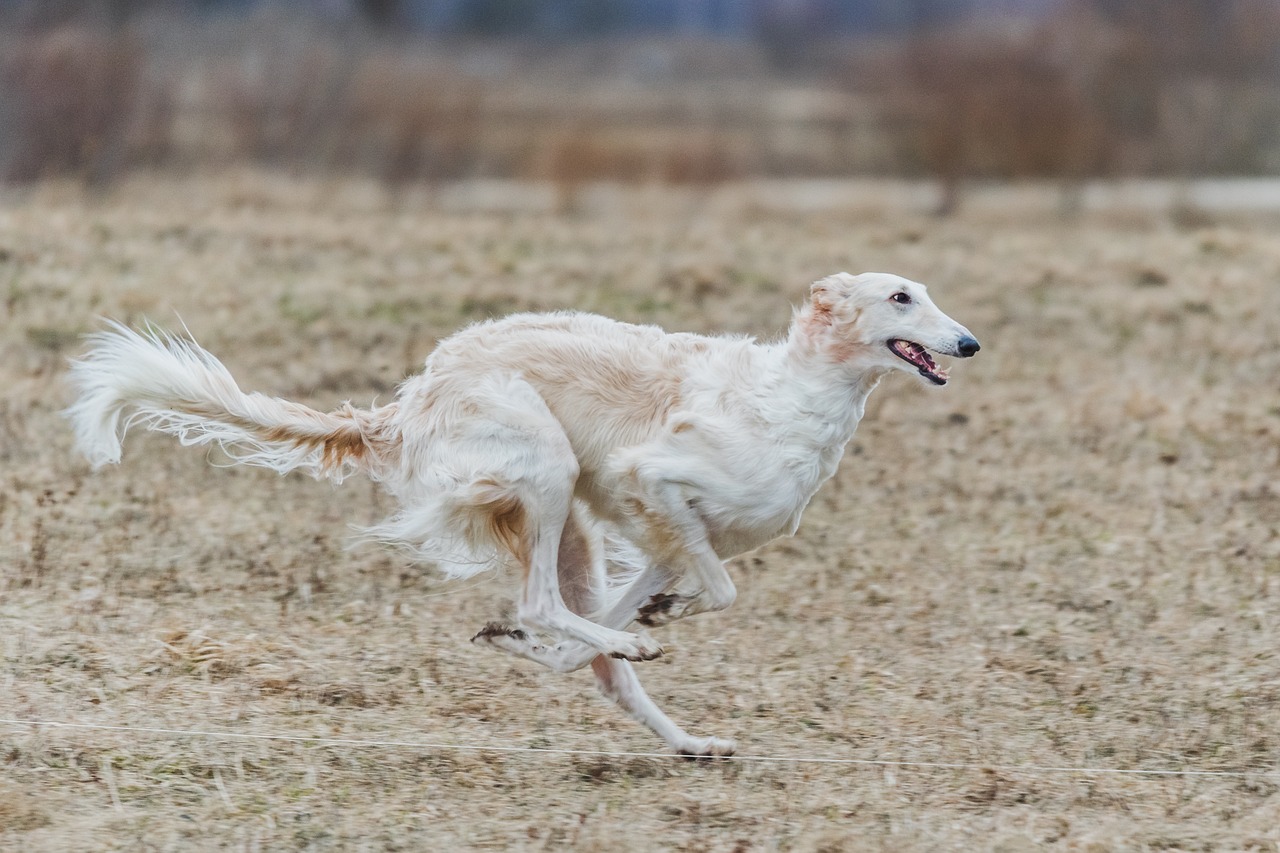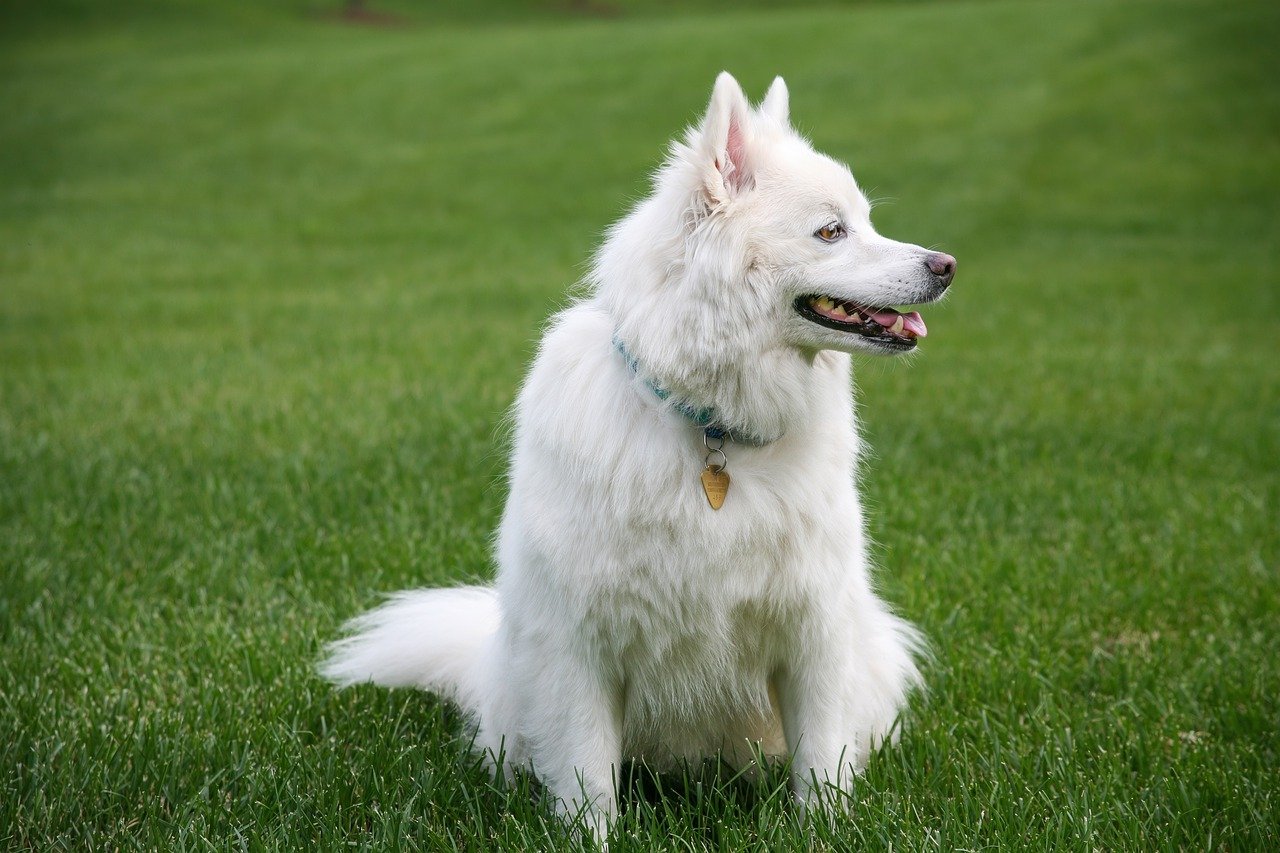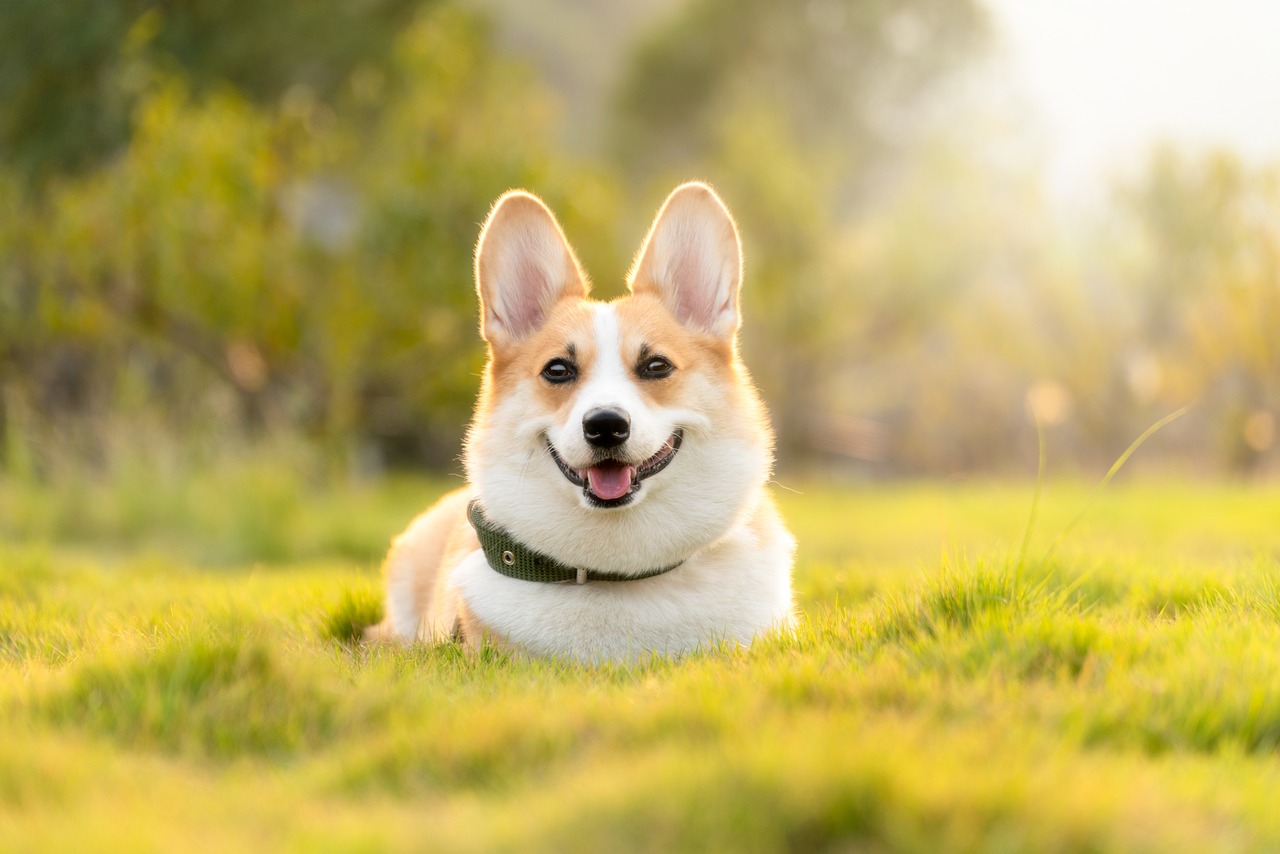Understanding the Personality of the American Eskimo Dog
The American Eskimo Dog, often affectionately referred to as the "Eskie," is a breed that captures the heart with its fluffy coat and bright eyes. But beyond their charming appearance lies a personality that is as vibrant as their fur is white. These dogs are known for their lively spirit and friendly demeanor, making them a popular choice for families and individuals alike. If you're considering adding an Eskie to your home, understanding their unique personality traits is essential to ensure a harmonious relationship.
One of the most striking aspects of the American Eskimo Dog's personality is their playfulness. They thrive on interaction and love to engage in activities that stimulate both their mind and body. Whether it's a game of fetch in the backyard or a playful romp in the park, these dogs are always ready for fun. Their energy levels are high, and they require regular exercise to keep them happy. Without it, they can become bored and may resort to mischievous behaviors. Think of them as the life of the party—always eager to join in and make the most of every moment!
In addition to their playful nature, American Eskimo Dogs are known for their affectionate temperament. They are incredibly loyal and form strong bonds with their families. This deep emotional connection means that they thrive on companionship and can sometimes experience separation anxiety if left alone for extended periods. It's crucial for potential owners to consider their lifestyle and how much time they can dedicate to their furry friend. After all, an Eskie is not just a pet; they are a family member who craves love and attention.
Another fascinating trait of the American Eskimo Dog is their intelligence. This breed is not only quick to learn commands but also adept at problem-solving. Their cognitive abilities make training an enjoyable experience, as they often pick up new tricks with ease. However, this intelligence can sometimes lead to challenges if they become bored or under-stimulated. It's essential to keep their minds engaged with interactive toys and training exercises. Remember, a tired Eskie is a happy Eskie!
Lastly, understanding the socialization needs of the American Eskimo Dog is key to ensuring they develop into well-rounded companions. These dogs generally get along well with children and other pets, but proper socialization from a young age is crucial. Introducing them to various environments, people, and animals will help them feel comfortable and confident in different situations. Think of socialization as a bridge that connects them to the world, allowing them to explore and enjoy life to the fullest.
In summary, the American Eskimo Dog is a breed full of personality, characterized by their playfulness, affection, intelligence, and social nature. Understanding these traits will not only help you decide if this breed is right for you but will also ensure that you can provide the love and care they need to thrive. If you're ready to welcome an Eskie into your home, prepare for a joyful journey filled with laughter, companionship, and endless love!
- Are American Eskimo Dogs good with children? Yes, they are known for their playful and protective nature, making them great family pets.
- How much exercise do they need? American Eskimo Dogs require regular exercise, ideally at least 30-60 minutes of playtime each day.
- Do they get along with other pets? With proper socialization, they typically interact well with other pets, but it's essential to introduce them gradually.
- Are they easy to train? Yes, they are intelligent and respond well to positive reinforcement training techniques.
- What are signs of anxiety in Eskies? Signs can include excessive barking, destructive behavior, or clinginess when separated from their owners.

Temperament Traits
The American Eskimo Dog is a breed that shines with a vibrant personality, making them a favorite among dog lovers. Known for their lively and friendly demeanor, these dogs are not just pets; they become cherished family members. Imagine a fluffy ball of energy that greets you with excitement every time you walk through the door! Their temperament is characterized by a mix of playfulness, intelligence, and a genuine affection for their human companions.
One of the most appealing traits of the American Eskimo Dog is their friendly disposition. They are naturally sociable and enjoy interacting with people, which makes them excellent companions for families. This breed thrives on companionship and is known to develop strong bonds with their owners. In fact, they often seek out human interaction, whether it’s snuggling on the couch or playing fetch in the backyard. Their warmth and affection can turn any house into a home.
However, with this affectionate nature comes a need for attention and engagement. American Eskimo Dogs can become bored or anxious if left alone for extended periods. This is where their high energy levels come into play. They require regular exercise and mental stimulation to keep their spirits high and their minds sharp. A bored Eskimo is not a happy Eskimo! Activities such as agility training, obedience classes, or even simple games of hide and seek can help channel their energy positively.
When it comes to their temperament, American Eskimo Dogs can be categorized into three sizes: toy, miniature, and standard. Each size may exhibit slightly different personality traits, but generally, all share the same enthusiastic spirit. For instance, while the toy variety might be more suited to apartment living, the standard size may thrive in a larger home with a yard. Regardless of size, they all possess a curious and playful nature that makes them delightful companions.
To further understand their temperament, let’s break down some key traits:
- Affectionate: They love to cuddle and be close to their families.
- Intelligent: Quick learners who thrive on mental challenges.
- Playful: Always ready for a game or a romp in the yard.
- Alert: Naturally protective, making them good watchdogs.
In summary, the American Eskimo Dog's temperament is a delightful mix of playfulness, intelligence, and affection. Their friendly nature makes them suitable for various family dynamics, but they do require a commitment to regular exercise and social interaction. If you’re ready to provide a loving home filled with activity and engagement, this breed could be the perfect addition to your family!

Socialization Needs
When it comes to the American Eskimo Dog, socialization is not just a nice-to-have; it’s a vital part of their development. These dogs thrive in environments where they can interact with various people, pets, and experiences. Think of socialization as the key that unlocks their potential to be the well-rounded companions we all desire. Without it, they might develop behavioral issues that could lead to anxiety or aggression. So, how do we ensure our furry friends grow up to be the best versions of themselves?
First off, it's essential to start socializing your American Eskimo Dog at a young age. The critical window for socialization is between 3 and 14 weeks. During this time, exposing them to different sights, sounds, and smells can significantly impact their future behavior. This could include everything from visits to the local park, trips to pet-friendly stores, or even hosting playdates with other dogs. The more varied their experiences, the more adaptable they will become.
However, socialization isn’t just about throwing your pup into a crowd and hoping for the best. It requires a thoughtful approach. Here are some effective strategies to consider:
- Controlled Exposure: Gradually introduce your dog to new experiences. Start in a calm environment and slowly increase the level of stimulation.
- Positive Reinforcement: Use treats and praise to reward your dog for calm behavior during new experiences. This will help them associate social situations with positive outcomes.
- Group Classes: Enroll in obedience or puppy training classes. These settings provide a structured environment for socialization with other dogs and people.
It's important to remember that every dog is unique. Some American Eskimo Dogs may be more naturally outgoing, while others might be more reserved. Pay attention to your dog's body language and comfort levels. If they seem overwhelmed, it’s okay to take a step back and try again later. The goal is to build their confidence, not to scare them.
Incorporating socialization into your dog's daily routine can be incredibly beneficial. Simple activities like walking in different neighborhoods, visiting pet-friendly cafes, or attending dog-friendly events can all contribute to their social development. The more you expose them to the world around them, the more they will learn to navigate it with ease.
Ultimately, socialization is about creating a well-adjusted dog that can handle various situations without fear or aggression. By investing time in their social needs, you’re not just enriching their lives; you’re also enhancing your relationship with them. A well-socialized American Eskimo Dog is a joy to have around, and they will thrive in a loving, engaging environment.
Interactions with Children
When it comes to family pets, the American Eskimo Dog shines brightly, especially in households with children. Their playful nature and affectionate temperament make them a fantastic choice for families looking for a furry companion. Imagine a fluffy ball of energy bounding around your living room, bringing laughter and joy to your kids. This breed is not only friendly but also possesses a protective instinct that makes them naturally inclined to look out for the little ones in the household.
One of the most endearing traits of the American Eskimo Dog is their playfulness. These dogs thrive on interaction and love to engage in games that involve chasing, fetching, or simply running around. They have an innate ability to match the energy levels of children, making playtime a delightful experience for everyone involved. It’s like having a built-in playmate who is always ready for fun! However, it’s essential for parents to supervise playtime, ensuring that interactions are safe and enjoyable for both the dog and the children.
Furthermore, American Eskimo Dogs are known for their gentle demeanor. They tend to be patient and tolerant, making them suitable for young kids who may not yet understand how to interact with animals properly. Teaching children how to approach and play with dogs can foster a lifelong bond and respect for animals. Here are some key points to keep in mind:
- Always supervise interactions between dogs and young children.
- Teach children to approach the dog calmly and gently.
- Encourage kids to respect the dog's space and signals.
Moreover, these dogs are known to be quite intuitive when it comes to sensing the emotions of their human companions. If a child is feeling down or upset, an American Eskimo Dog might snuggle up to them, providing comfort and companionship. This emotional connection can be incredibly beneficial for children, teaching them empathy and nurturing skills as they care for their furry friend.
In conclusion, the American Eskimo Dog is not just a pet; they are a loving member of the family who can bring endless joy and companionship to children. Their playful spirit, protective nature, and emotional sensitivity make them a perfect match for families. So, if you’re considering adding a furry friend to your home, the American Eskimo Dog could be the ideal choice for creating lasting memories with your kids.
1. Are American Eskimo Dogs good with children?
Yes, American Eskimo Dogs are known for their friendly and gentle nature, making them excellent companions for children.
2. How should I introduce my American Eskimo Dog to my kids?
Introduce them slowly and supervise their interactions, teaching your children to approach the dog calmly.
3. What activities can my American Eskimo Dog do with my children?
They love playing fetch, running, and engaging in interactive games that keep them both entertained.
4. Can American Eskimo Dogs sense when children are upset?
Yes, they are quite intuitive and can often provide comfort to children when they are feeling down.
Playfulness and Energy
The American Eskimo Dog is a bundle of joy wrapped in a fluffy coat! Known for their high energy levels and playful demeanor, these dogs thrive on activity and companionship. Imagine a small tornado of fur, dashing around the yard, chasing after a ball or engaging in a spirited game of tug-of-war. Their playful nature not only keeps them fit but also brings immense joy to their families. If you’re considering bringing one into your home, be prepared for an adventure filled with laughter and fun!
These dogs are like the life of the party, always ready to engage with their human companions. They love to play fetch, run, and explore their surroundings. It’s essential to provide them with ample opportunities to burn off their energy. Regular playtime is not just a luxury; it’s a necessity for their physical and mental well-being. Here are some engaging activities that can keep your American Eskimo Dog happy and healthy:
- Daily Walks: A brisk walk can do wonders for their energy levels.
- Interactive Toys: Puzzle toys can stimulate their minds and keep them entertained.
- Agility Training: Setting up an obstacle course can be a fun way to challenge their physical abilities.
- Social Playdates: Arranging playdates with other dogs can help them socialize and expend energy.
Engaging in these activities not only helps in keeping them physically fit but also strengthens the bond between you and your furry friend. Just like a child needs playtime to develop and grow, American Eskimo Dogs require regular interaction and stimulation to thrive. Without enough exercise, they might resort to less desirable behaviors, such as chewing furniture or excessive barking, simply because they have pent-up energy that needs to be released.
In addition to physical activities, mental stimulation is equally important. These dogs are intelligent and enjoy challenges that make them think. Incorporating training sessions into playtime can be a fantastic way to keep their minds sharp while also reinforcing good behavior. Think of it as a workout for their brain! The more engaged they are, the happier they will be.
Ultimately, the American Eskimo Dog is a breed that flourishes in an active environment. Their playful spirit and boundless energy can turn an ordinary day into an extraordinary adventure. So, if you’re ready for a lively companion who will fill your life with joy and laughter, the American Eskimo Dog might just be the perfect fit for you!
- How much exercise does an American Eskimo Dog need?
They typically require at least 30-60 minutes of exercise daily, including walks and playtime. - Are American Eskimo Dogs good with children?
Yes! They are known for their friendly and playful nature, making them great family pets. - Do they require a lot of grooming?
Yes, their thick, fluffy coat needs regular brushing to prevent matting and to keep it healthy. - Can they live in an apartment?
While they can adapt to apartment living, they need sufficient daily exercise to stay happy and healthy.
Training Techniques
When it comes to training your American Eskimo Dog, understanding their unique personality traits is essential. These dogs are not just fluffy bundles of energy; they are also incredibly intelligent and eager to please. This means that with the right techniques, you can harness their natural enthusiasm and curiosity to create a well-behaved companion. The key is to use positive reinforcement methods that reward good behavior rather than punishing mistakes. This approach not only builds trust between you and your dog but also makes training a fun experience for both of you.
One effective training technique is to incorporate short, engaging training sessions into your daily routine. Aim for sessions that last about 5 to 10 minutes, as American Eskimo Dogs can lose focus if they feel overwhelmed. During these sessions, you can teach basic commands such as sit, stay, and come. Use treats, praise, or toys as rewards to motivate your dog. Over time, you can gradually increase the complexity of the commands and introduce new tricks, keeping their minds sharp and engaged.
Consistency is another crucial aspect of training. Make sure that all family members are on the same page regarding commands and rules. For instance, if you don’t want your dog to jump on the furniture, everyone in the household should enforce that rule. This consistency helps your American Eskimo Dog understand what is expected of them, reducing confusion and frustration.
Socialization is also a vital part of training. Exposing your dog to different environments, people, and other animals will help them become well-adjusted and confident. Consider taking them to dog parks, pet-friendly events, or even just on walks in various neighborhoods. The more experiences they have, the better they will adapt to new situations.
Lastly, patience is key. Every dog learns at their own pace, and while some American Eskimo Dogs may pick up commands quickly, others might take a little longer. Celebrate their successes, no matter how small, and remain calm during setbacks. Remember, training is a journey, not a race, and building a strong bond with your dog through this process will pay off in the long run.
- How long does it take to train an American Eskimo Dog? Training duration varies depending on the individual dog, but consistent, short sessions can lead to significant progress within a few weeks.
- Are American Eskimo Dogs easy to train? Yes, they are generally eager to please and quick learners, especially when positive reinforcement techniques are used.
- What commands should I start with? Begin with basic commands like sit, stay, come, and down to establish a solid foundation for further training.
- How can I socialize my American Eskimo Dog? Introduce them to different environments, people, and other pets gradually, ensuring each experience is positive and rewarding.
Compatibility with Other Pets
The American Eskimo Dog is a breed that often brings joy and energy into a household, but how do they fit in with other pets? Well, the answer can vary, but generally, these dogs are known for their friendly and adaptable nature. They can coexist harmoniously with other animals, provided they are properly socialized from a young age. Their playful demeanor often makes them great companions for other dogs, and they can even form strong bonds with cats and smaller pets, given the right circumstances.
One of the key factors in ensuring compatibility with other pets is early socialization. Exposing your American Eskimo Dog to various animals during their formative months can help them develop a positive attitude towards different species. It’s essential to create a controlled environment where they can meet other pets gradually. For instance, supervised playdates can be an excellent way to introduce them to new friends. This method allows you to monitor their interactions and intervene if necessary, ensuring that both your Eskie and the other pets feel safe and comfortable.
Another important aspect to consider is the temperament of your American Eskimo Dog. While they are generally friendly, some individuals may exhibit a more dominant personality. In such cases, it’s important to establish a hierarchy in the household. This means that all pets should understand their place, which can help prevent conflicts. If you have other dogs, introducing them to your Eskie on neutral ground can also help ease any tension. A park or a friend's backyard can serve as the perfect setting for this introduction.
When it comes to interactions with smaller pets, such as rabbits or guinea pigs, caution is necessary. The American Eskimo Dog’s natural instinct to chase can kick in, especially if they are not used to being around smaller animals. Therefore, it’s crucial to supervise any interactions closely and consider using a leash during initial meetings. Over time, with consistent training and positive reinforcement, your Eskie can learn to coexist peacefully with smaller pets.
In summary, while American Eskimo Dogs can be compatible with other pets, it largely depends on early socialization, temperament, and the introduction process. If you’re considering adding an Eskie to your family that already includes other animals, take the time to ensure a smooth transition. With the right approach, your home can be a happy and harmonious place for all your furry friends.
- Are American Eskimo Dogs good with cats? Yes, with proper introductions and socialization, many American Eskimo Dogs can live happily with cats.
- How do I introduce my Eskie to a new pet? Start with short, supervised meetings in a neutral space, gradually increasing their time together as they become more comfortable.
- What should I do if my Eskie shows aggression towards other pets? Consult a professional trainer or behaviorist to address any aggressive tendencies and develop a training plan.

Intelligence and Learning Ability
The American Eskimo Dog is not just a pretty face; they are renowned for their sharp intellect and impressive learning abilities. These dogs are like little furry sponges, soaking up knowledge and commands with remarkable speed. If you're considering bringing one of these delightful companions into your home, you'll be thrilled to know that their intelligence can make training a breeze! But what does this really mean for you as an owner? Well, it means that with the right approach, you can teach them a variety of commands and tricks that will not only impress your friends but also strengthen the bond between you and your pet.
One of the most fascinating aspects of the American Eskimo Dog's intelligence is their ability to learn through observation. They are quick to pick up on routines and can often mimic behaviors they see in their human family members. This trait makes them excellent companions, as they can adapt to your lifestyle and even help you with daily tasks. Imagine having a dog that not only fetches your slippers but also knows when it’s time for a walk or a play session!
When it comes to training, consistency is key. American Eskimo Dogs thrive in environments where they know what to expect. By establishing a regular training schedule and using positive reinforcement, you can effectively teach them commands and tricks. For example, rewarding them with treats or praise when they successfully follow a command can create a positive feedback loop that encourages them to learn even more. Here are some effective training techniques to consider:
- Positive Reinforcement: Always reward good behavior with treats or affection.
- Short Training Sessions: Keep sessions brief to maintain their focus and enthusiasm.
- Variety in Commands: Mix up the commands to keep their interest piqued.
However, it’s essential to remember that their intelligence can sometimes lead to challenges. American Eskimo Dogs can become bored easily if they aren't mentally stimulated. This boredom can manifest in destructive behaviors, so it’s crucial to keep their minds engaged. Puzzle toys, interactive games, and even agility training can help channel their energy and intelligence positively. Think of it as giving them a mental workout; just like humans, dogs need to exercise their brains!
Moreover, their problem-solving skills are impressive, but they require guidance. When faced with a challenge, they may try to find their own solutions, which can be both a blessing and a curse. For instance, they might figure out how to open doors or get into cabinets. It’s essential to provide them with appropriate outlets for their problem-solving instincts. Providing a variety of toys and engaging in training exercises that challenge their minds can help keep them focused on the right tasks.
In summary, the intelligence and learning ability of the American Eskimo Dog make them a joy to train and live with. Their capacity to learn quickly, adapt to routines, and solve problems can lead to a fulfilling and interactive relationship. Just remember, with great intelligence comes great responsibility—ensure you provide them with the mental stimulation they crave, and you'll have a happy, well-adjusted furry friend by your side!
- How quickly can American Eskimo Dogs learn new commands? They can often learn new commands within a few repetitions, especially when positive reinforcement is used.
- Are American Eskimo Dogs easy to train? Yes, they are generally easy to train due to their intelligence and eagerness to please.
- What types of activities can help stimulate their minds? Puzzle toys, agility training, and interactive games are great for mental stimulation.
Obedience Training
Obedience training is not just a chore; it's a vital part of building a strong relationship with your American Eskimo Dog. These intelligent pups thrive on structure and routine, which makes training an essential aspect of their daily lives. Think of training as a way to communicate with your furry friend, establishing a common language that strengthens your bond. When you invest time in teaching your dog commands, you're not only enhancing their behavior but also enriching their lives. After all, a well-trained dog is a happy dog!
One of the most effective methods for training American Eskimo Dogs is through positive reinforcement. This approach involves rewarding desired behaviors rather than punishing unwanted ones. For instance, when your dog sits on command, shower them with praise or give them a treat. This not only encourages them to repeat the behavior but also creates a positive association with training sessions. It's like throwing a party every time they get it right! Remember, consistency is key. Keep your commands clear and your rewards immediate to reinforce learning.
When starting with obedience training, begin with basic commands such as sit, stay, and come. These foundational commands are crucial for ensuring your dog understands what you expect from them. You might find it helpful to set up a training schedule, dedicating short, focused sessions throughout the day. For example, you could train for about 5-10 minutes, three times a day, to keep your dog engaged without overwhelming them.
Here’s a simple table that outlines some basic commands and their benefits:
| Command | Benefit |
|---|---|
| Sit | Helps with impulse control and is a foundation for other commands. |
| Stay | Teaches patience and can prevent dangerous situations. |
| Come | Essential for safety, ensuring your dog returns to you when called. |
As you work through these commands, remember to be patient. Each dog learns at their own pace, and American Eskimo Dogs, while intelligent, may have their moments of distraction. If you find your dog struggling with a command, take a step back and simplify the task. Sometimes, breaking things down into smaller steps can make all the difference. And don’t forget to celebrate the small victories! A simple “good job!” can go a long way in boosting their confidence.
Incorporating play into your training sessions can also be a game-changer. For example, use a favorite toy as a reward or incorporate games like fetch to reinforce commands. This not only makes the training process more enjoyable for your dog but also helps them associate learning with fun. Imagine your dog bounding towards you, tail wagging, ready to play, all because they just nailed that command!
Lastly, consider enrolling your American Eskimo Dog in a training class or seeking guidance from a professional trainer. This can provide you with additional tools and techniques to enhance your training experience. Plus, it offers a fantastic opportunity for socialization with other dogs and people, which is crucial for this breed. After all, a well-rounded dog is a happy dog!
- How long does it take to train an American Eskimo Dog? Training duration varies, but with consistent practice, most dogs can learn basic commands within a few weeks.
- Can I train my dog at home? Absolutely! Home training is effective as long as you maintain consistency and use positive reinforcement techniques.
- What should I do if my dog isn’t responding to commands? If your dog seems unresponsive, try simplifying the command, changing your training environment, or increasing the reward to regain their focus.
Problem-Solving Skills
The American Eskimo Dog is not just a pretty face; they come packed with a brain that’s always buzzing with activity. Their are one of the traits that make them truly stand out. Imagine having a furry companion that can think on its feet, navigate challenges, and even entertain itself when boredom strikes! This breed has a natural curiosity that drives them to explore their surroundings, often leading to creative solutions for the little puzzles life throws their way.
One of the fascinating aspects of their intelligence is their ability to learn commands quickly. This isn’t just about memorizing tricks; it’s about understanding the context and applying that knowledge to different situations. For instance, an American Eskimo Dog may learn to sit on command, but they can also figure out when it's appropriate to do so—like when they want a treat or when it's time to calm down during a family gathering. This adaptability makes them not only fun to train but also highly responsive to their owners' needs.
However, this cleverness can also pose challenges. If they become bored or under-stimulated, their minds may wander towards mischief. They might find ways to entertain themselves that aren’t always desirable, like digging through the trash or rearranging your shoes. Therefore, it’s essential to keep their minds engaged with various activities. You can provide them with puzzle toys, engage in obedience training, or even set up obstacle courses in your backyard to satisfy their need for mental stimulation.
To channel their problem-solving abilities positively, consider incorporating interactive games into your daily routine. These can range from simple fetch games to more complex tasks like scent work, where they use their noses to find hidden treats. Not only does this keep them entertained, but it also strengthens the bond between you and your furry friend. Here’s a quick table outlining some engaging activities you can try:
| Activity | Description |
|---|---|
| Puzzle Toys | Interactive toys that challenge your dog to solve problems to get treats. |
| Agility Training | Set up a course for your dog to navigate, enhancing both mental and physical skills. |
| Scent Work | Teach your dog to find hidden treats using their sense of smell, stimulating their mind. |
| Hide and Seek | A fun game where you hide and call your dog to find you, promoting problem-solving and recall. |
In conclusion, the problem-solving skills of the American Eskimo Dog are a double-edged sword. While their intelligence can lead to delightful moments of discovery and fun, it also requires responsible ownership to ensure they remain engaged and happy. By providing them with the right mental challenges and interactive play, you can harness their cleverness in a way that benefits both you and your furry friend.
- Are American Eskimo Dogs easy to train? Yes, their intelligence and eagerness to please make them highly trainable.
- What are some signs of boredom in American Eskimo Dogs? Look for destructive behaviors, excessive barking, or attempts to escape their environment.
- How can I keep my American Eskimo Dog mentally stimulated? Engage them with puzzle toys, training sessions, and interactive games.

Emotional Sensitivity
The American Eskimo Dog is not just a fluffy bundle of joy; they are also deeply emotional beings. Their is one of the defining traits of this breed, making them incredibly attuned to the feelings of their owners. Have you ever noticed how your dog seems to know when you're feeling down? That's the American Eskimo Dog for you! They thrive on emotional connections and can sense your mood from a mile away. This trait makes them not only great companions but also excellent emotional support animals.
Because of their high level of emotional intelligence, these dogs can form strong bonds with their families. They often follow their owners around the house, seeking to be part of every activity. This closeness is a double-edged sword, though; while it fosters a loving relationship, it also means that they can become anxious if left alone for extended periods. It's essential to understand that their emotional sensitivity can lead to feelings of insecurity, especially in new environments or situations. Have you ever felt like your dog was giving you the "puppy eyes" when you left the room? That’s their way of expressing anxiety and longing for your presence.
To help your American Eskimo Dog feel secure, consider creating a safe space for them within your home. This could be a cozy corner with their favorite blanket and toys, where they can retreat when feeling overwhelmed. Additionally, engaging in regular cuddle sessions or quiet time can significantly enhance their feeling of safety and belonging. Remember, these dogs are not just pets; they are family members who require emotional nurturing just like we do.
It's also important to recognize the signs of anxiety in your American Eskimo Dog. They may exhibit behaviors such as:
- Excessive barking
- Destructive chewing
- Restlessness or pacing
- Avoidance of social interactions
By being observant and responsive to these behaviors, you can help alleviate their stress. Simple practices like maintaining a consistent routine, providing plenty of exercise, and introducing them gradually to new experiences can make a world of difference. Think of it as building a bridge of trust; the more you reinforce positive experiences, the stronger the bond becomes.
In summary, the emotional sensitivity of the American Eskimo Dog is both a gift and a responsibility. By understanding their needs and behaviors, you can create an environment that nurtures their emotional well-being. Remember, your dog is not just a pet; they are a loyal companion who relies on your love and support to thrive.
- How can I tell if my American Eskimo Dog is anxious?
Look for signs such as excessive barking, destructive behavior, or reluctance to engage with family members. - What can I do to help my dog feel more secure?
Create a safe space, maintain a consistent routine, and provide plenty of physical and mental exercise. - Are American Eskimo Dogs good for families?
Yes! Their friendly and protective nature makes them excellent family pets, especially around children.
Understanding Anxiety
When it comes to the American Eskimo Dog, understanding their emotional landscape is as crucial as knowing their physical needs. These dogs are not just fluffy companions; they are sensitive souls who can experience anxiety in various situations. Imagine having a best friend who feels every little change in the environment—this is what life is like for an American Eskimo Dog. Their anxiety can stem from different sources, including changes in routine, loud noises, or even new faces in the household.
Recognizing the signs of anxiety is the first step towards helping your furry friend feel more secure. Common indicators include excessive barking, pacing, hiding, or destructive behavior. If you notice your dog exhibiting any of these behaviors, it’s essential to take a step back and assess what might be causing their distress. Think of it as being a detective; you need to gather clues to understand their emotional state better.
One effective way to manage anxiety is through creating a safe space for your American Eskimo Dog. This could be a cozy corner in your home where they can retreat when feeling overwhelmed. A comfortable bed, some toys, and maybe a piece of your clothing can make this space feel more secure. Consider the following tips to help alleviate anxiety:
- Consistency is Key: Keeping a stable routine can help your dog feel more secure. Regular feeding times, walks, and playtime can work wonders.
- Positive Reinforcement: Rewarding calm behavior with treats or praise can encourage your dog to associate certain situations with positive outcomes.
- Calm Environment: Reducing loud noises or chaotic environments can help create a peaceful atmosphere for your dog.
Additionally, engaging in regular physical activity is a fantastic way to reduce anxiety. Just like us, dogs benefit from exercise to release pent-up energy. Activities such as long walks, fetch, or agility training not only keep them physically fit but also mentally stimulated. Think of it as a two-for-one deal: exercise for the body and the mind!
If anxiety persists despite your efforts, it might be worth consulting a veterinarian. They can provide guidance on behavioral therapies or, in some cases, medications that can help your dog cope better. Remember, just like humans, every dog is unique, and what works for one might not work for another. The goal is to create a loving and secure environment where your American Eskimo Dog can thrive.
Q: How can I tell if my American Eskimo Dog is anxious?
A: Look for signs such as excessive barking, pacing, hiding, or destructive behavior. If your dog seems restless or overly clingy, they may be experiencing anxiety.
Q: What can I do to help my anxious dog?
A: Establish a consistent routine, create a safe space, and engage in regular exercise. Positive reinforcement can also help your dog feel more secure.
Q: Should I consult a veterinarian about my dog's anxiety?
A: Yes, if your dog's anxiety is severe or persistent, a veterinarian can provide valuable advice and may recommend behavioral therapies or medications.
Building Trust and Security
Creating a trusting environment for your American Eskimo Dog is essential for their overall happiness and well-being. Just like humans, dogs thrive in an atmosphere where they feel safe and secure. When you take the time to build this trust, you’re not only enhancing their quality of life but also strengthening the bond between you and your furry friend. Think of it as laying a solid foundation for a house; without it, everything else is at risk of crumbling.
One of the first steps in building trust is to establish a consistent routine. Dogs, especially those as intelligent as the American Eskimo, find comfort in predictability. When they know what to expect from their day—whether it’s meal times, walks, or play sessions—they feel more secure. Additionally, incorporating positive reinforcement during training sessions can dramatically improve their confidence. Remember, every time they succeed, they should be rewarded with praise or treats. This not only encourages good behavior but also reassures them that they are doing the right thing.
Another crucial aspect is to create a safe space for your dog. This could be a cozy corner with their bed, toys, and blankets. When they have a designated area where they can retreat, it helps them feel secure, especially during stressful situations such as thunderstorms or fireworks. Consider the following tips for creating a safe space:
- Choose a quiet area away from the hustle and bustle of the household.
- Include their favorite toys and a comfortable bed.
- Make it a no-interruption zone, where they can relax without disturbances.
Additionally, your demeanor plays a significant role in how your dog perceives their environment. Dogs are incredibly perceptive and can pick up on your emotions. If you’re calm and confident, your American Eskimo will likely mirror that behavior. On the flip side, if you’re anxious or stressed, they may become unsettled. So, it’s important to maintain a relaxed atmosphere, especially during training or socialization exercises.
Lastly, patience is key. Building trust takes time, and every dog is unique. Some may warm up quickly, while others might take a bit longer to feel comfortable. It’s essential to respect their pace and not rush the process. Celebrate the small victories, whether it’s your dog approaching you for the first time or responding to a command. Each step forward is a testament to the trust you’re building together.
In conclusion, fostering trust and security in your American Eskimo Dog is a journey that requires commitment and understanding. By establishing routines, creating a safe space, maintaining a calm demeanor, and exercising patience, you can cultivate a strong, trusting relationship. This bond will not only enhance your dog’s emotional health but also enrich your life with the joy and companionship that only a well-loved dog can provide.
Here are some common questions that new American Eskimo Dog owners often have:
- How long does it take to build trust with my American Eskimo Dog?
Trust-building varies by dog, but with consistency and patience, you should start seeing progress within a few weeks. - What should I do if my dog shows signs of anxiety?
Recognize the signs, create a safe space, and consult a veterinarian or a dog behaviorist if necessary. - Can I train my American Eskimo Dog while building trust?
Absolutely! Use positive reinforcement techniques to make training a fun and rewarding experience.
Frequently Asked Questions
- What is the temperament of the American Eskimo Dog?
The American Eskimo Dog is known for its lively, friendly, and playful temperament. They are generally affectionate and enjoy being around people, making them great family pets. Their energetic nature means they thrive in active households where they can engage in plenty of playtime and social interaction.
- How important is socialization for American Eskimo Dogs?
Socialization is crucial for American Eskimo Dogs. Proper exposure to different environments, people, and other pets helps them develop into well-rounded companions. This breed can be wary of strangers, so early and consistent socialization is key to ensuring they are comfortable and confident in various situations.
- Are American Eskimo Dogs good with children?
Absolutely! American Eskimo Dogs are typically very good with children. Their playful nature and protective instincts make them wonderful companions for kids. However, it’s always important to supervise interactions to ensure that both the dog and the children are safe and comfortable.
- What kind of training techniques work best for this breed?
Positive reinforcement is the most effective training method for American Eskimo Dogs. Using treats, praise, and playtime as rewards helps motivate them to learn commands and good behavior. Consistency is also vital, as these dogs respond best to structured training sessions that reinforce what they’ve learned.
- How do American Eskimo Dogs interact with other pets?
American Eskimo Dogs can get along well with other pets, but early socialization plays a significant role in this. Introducing them gradually to other animals and monitoring their interactions can help create a harmonious household. Their playful nature often leads to friendly interactions, but each dog's temperament can vary.
- Are American Eskimo Dogs easy to train?
Yes, American Eskimo Dogs are generally easy to train due to their intelligence and eagerness to please. They often learn commands quickly, but owners should remain patient and use positive reinforcement techniques to encourage good behavior and obedience.
- What are some signs of anxiety in American Eskimo Dogs?
Signs of anxiety in American Eskimo Dogs can include excessive barking, pacing, destructive behavior, or withdrawal. If you notice these behaviors, it’s essential to address them promptly. Creating a calm environment and providing plenty of exercise can help alleviate their stress.
- How can I build trust with my American Eskimo Dog?
Building trust with your American Eskimo Dog involves creating a secure and loving environment. Spend quality time with them, use positive reinforcement during training, and be consistent in your interactions. This will help them feel safe and strengthen the bond between you.



















